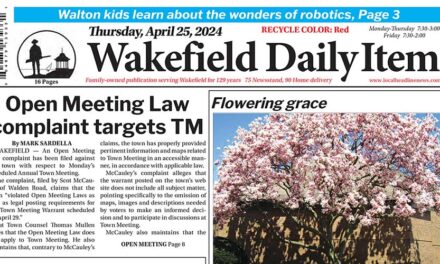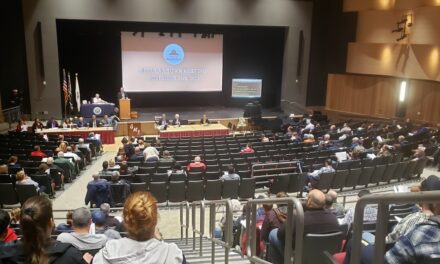Published in the May 27, 2016 edition.
WAKEFIELD — All Peter Duston wanted, back when he was 11 or 12, was to be the bugler for Lynnfield’s Boy Scout Troop 51.
So he took private trumpet lessons with substitute teacher Gerald Scott, a Wakefield musician Peter remembers to this day.
Duston would become the bugler for his troop — “I’m sure I wasn’t very good” — and will always remember that Gerry Scott taught him to play TAPS before Gerry was called up to fight in the Korean War.
Scott, a sergeant with the Second Infantry Division of the Eighth Army, went missing during one of the war’s worst massacres, in the Hoengseong Valley south of Seoul in early 1951. He was listed as MIA. It is believed Scott died during a “death march” from South Korea into North Korea.
Last year, Duston and his wife went on a trip to Asia. On that trip, Duston obtained some maps and with the help of the South Korean Army, located the battle zone and likely place of Gerry Scott’s capture. Duston held a small memorial service for his one-time music teacher.
Duston graduated from Wakefield High in the Class of 1956 and plays the bugle to this day. The retired Army Reservist plays TAPS at veterans’ funerals.
“Gerry never got TAPS,” Duston said.
The massacre at Hoengseong Valley was recounted by Gary Turbak in VFW Magazine.
“In early February (1951), with the Chinese offensive stalled, U.N. commanders prepared a counter assault across the center of the Korean peninsula. This time, however, Republic of Korea (ROK) troops were to do the bulk of the fighting — with elements of various U.S. infantry, artillery and other units supporting them. The notion of Americans supporting ROK troops was very much an experiment — one U.S. military leaders later regretted.
“What U.N. commanders didn’t know was that Communist forces also were launching a major offensive and had moved four Chinese and two North Korean divisions into the area north of the village of Hoengsong. On Feb. 11, ROKs tangled with Communist forces, quickly disintegrating the planned South Korean offensive.
“At one point, GIs of the supporting 15th Field Artillery (FA) Battalion (Second Division) encamped for the night, relying on ROK infantry for protection. When the Chinese attacked in the dark, the South Koreans fled. The enemy swarmed over the U.S. position. Some 204 artillerymen ultimately died, resulting in one of the most concentrated losses of American lives in the entire war, according to Joseph Gould in “Korea: The Untold Story.”
“Retreating ROKs streamed south past U.S. support forces, allowing the Chinese to flank American positions. Soon, the Chinese owned the narrow, twisting valley north of Hoengsong and the road that ran through it — the only escape route.
“Steep hills rose up on both sides of the road, turning the valley into a shooting gallery. The Chinese relentlessly rained mortar fire down on the withdrawing and vastly outnumbered GIs. Later came the hand-to-hand fighting.
‘“At times,’ said one battalion commander, ‘U.N. troops lined up on one side of the road and tossed grenades at the enemy attacking from the other side of the road.’”
Officially, at least 700 troops had been killed. Historians believe the number to be much greater.
Turbak continues, “American rescue forces fought their way north from Hoengsong to the besieged units only to find that a river of Chinese soldiers poured in behind them. Points secured just an hour or so earlier reverted quickly to enemy hands.
“U.S. infantrymen tried to clear an escape route for the howitzers, supply trucks and other vehicles, but Chinese soldiers were everywhere. U.S. artillery fired point blank into ranks of attacking enemy, but it did little good.
“As soon as the withdrawing GIs pushed through one Chinese strongpoint, they would run smack into another — while enemy forces reformed behind them. Some 2,000 Chinese troops manned one enormous roadblock. But the route south was the only way out. So the Americans continued to run this meat grinder of a gauntlet toward Hoengsong, taking heavy losses all the way.
“Finally, the column of weary survivors reached Hoengsong. GIs who made it to the village joined a more general and less hazardous retreat farther south and lived to fight another day. Yet in the little valley to the north there was only death. …”
Gerry Scott was 22 years old when he was reported missing in action.




